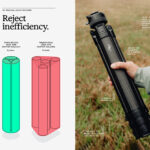Backgrounds play a pivotal role in studio photography. They play a subtle yet very important role to help fill out evocative portraits. They complement the subject, adding a sense of depth and creating a certain mood. When selecting the background for your studio, using fabric can be a great idea. There is a variety of colors and patterns to choose from. However, making a fabric background that actually looks good is a bit tricky. In this video, photographer Gavin Hoey from Adorama shows how you can make a crease-free fabric background, and also shares ways you can create different backgrounds using the same fabric:
One major challenge you’ll face when using fabric for your studio background: creases. They may not appear when you look at the background straight, but they’ll surely be visible when the background is lit from the sides. In this context, Hoey shares a very handy tip: get yourself a fabric that’s a bit stretchy. This way, you can easily tackle the creases by stretching it using clamps, light stands and poles.
Hoey further demonstrates how the position of your lights affects the appearance of the fabric background. The closer the light is to the background—and the smaller the angle is between them—the greater are the chances that the imperfections will show up. So be very careful when setting up your lighting.
Toward the end of the video, Hoey also shares two great tips on how you can use the same fabric backdrop in other ways to achieve an entirely different look. Be sure to watch the complete video. We’re sure you’ll love it—especially if you’re setting up a small studio on a budget.
Like This Article?
Don't Miss The Next One!
Join over 100,000 photographers of all experience levels who receive our free photography tips and articles to stay current:






Silky, shiny fabrics combined with wind machines or even fans make for a really nice effect which sculpt the light in such a way that’s much more difficult to achieve without. Really inspiring.
Just make sure your fabric has been steamed or ironed first as the wrinkles WILL show and lessen the effect.
We have an industrial air-mover in the studio which really does the business. Great post, more like this please!